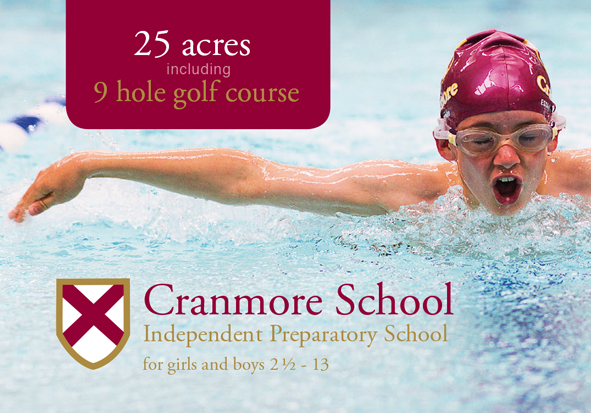EDUCATION
Surrey’s Premier Lifestyle Magazine
Testing times
Michael Connolly, headmaster of Cranmore School, considers what type of school meets children’s needs in the 21st century.

There are a few topics which feature regularly in the national press – healthcare, transport and, of course, education. This is hardly surprising as all of these issues can have a significant impact on our lives. The appointment of a new government minister in charge of these portfolios inevitably generates a great deal of heated debate in the press, particularly on what changes should be made to improve the service offered.
Justine Greening took charge of education from July this year. Experience suggests that this is a real hot seat and supporters and critics alike have pored over her own educational background to find clues about her underlying philosophy of education. In fact, she attended a comprehensive school in Rotherham. She has several tricky challenges which come under her brief: teachers’ pay, the school curriculum, school improvement, and the establishment of academies and free schools. Each one of these issues can present a minefield to trap the unwary. In a period of austerity, how can one establish a pay structure and career path which will attract the best graduates into the teaching profession? Should she tamper with the national curriculum e.g. by making maths, modern languages or other subjects compulsory for particular year groups? How can one enhance school improvement – is it more rigorous testing, smaller classes or a bigger investment in digital resources? However, it is the growth of academies and free schools which is changing the educational landscape. The underlying belief is that academies run by companies or free schools created by committed members of a local community will make a better fist of it than a local authority.
Justine Greening took charge of education from July this year. Experience suggests that this is a real hot seat and supporters and critics alike have pored over her own educational background to find clues about her underlying philosophy of education. In fact, she attended a comprehensive school in Rotherham. She has several tricky challenges which come under her brief: teachers’ pay, the school curriculum, school improvement, and the establishment of academies and free schools. Each one of these issues can present a minefield to trap the unwary. In a period of austerity, how can one establish a pay structure and career path which will attract the best graduates into the teaching profession? Should she tamper with the national curriculum e.g. by making maths, modern languages or other subjects compulsory for particular year groups? How can one enhance school improvement – is it more rigorous testing, smaller classes or a bigger investment in digital resources? However, it is the growth of academies and free schools which is changing the educational landscape. The underlying belief is that academies run by companies or free schools created by committed members of a local community will make a better fist of it than a local authority.
Just to make things even more complicated, there is considerable speculation that Theresa May wishes to turn the clock back by creating more selective grammar schools. Some commentators who are opposed to grammar schools have been quick to share their views. Toby Young, writing in The Spectator, states “… let’s not pretend bringing back grammars will boost social mobility.” Ironically, he had the benefit of a grammar school education himself which ensured he achieved a place at Oxford.
The reality is that there is no one type of school which fits all. There is a great deal of published research to advance the cause of different models of education. However, there are so many variables involved that it is hard for one to draw definite conclusions. That stated, I would like to suggest a few observations based upon my experience, which includes over 20 years as a headmaster as well as being a school inspector. Successful schools have a clear structure and a degree of order, without these there is little that can be achieved. Successful schools also create and sustain an ‘aspirational culture’. It is vital that both teachers and pupils are engaged in a joint venture of improvement within a framework of challenging targets. Yes, smaller classes can help, as will the quality of educational resources, but these aspects can often be over-rated. For example, it is important that pupils can use digital technology effectively, but giving every child an iPad will not be a panacea for perceived deficiencies in their core skills.
The reality is that there is no one type of school which fits all. There is a great deal of published research to advance the cause of different models of education. However, there are so many variables involved that it is hard for one to draw definite conclusions. That stated, I would like to suggest a few observations based upon my experience, which includes over 20 years as a headmaster as well as being a school inspector. Successful schools have a clear structure and a degree of order, without these there is little that can be achieved. Successful schools also create and sustain an ‘aspirational culture’. It is vital that both teachers and pupils are engaged in a joint venture of improvement within a framework of challenging targets. Yes, smaller classes can help, as will the quality of educational resources, but these aspects can often be over-rated. For example, it is important that pupils can use digital technology effectively, but giving every child an iPad will not be a panacea for perceived deficiencies in their core skills.

Regardless of the type of school, it must offer a balanced curriculum which meets the children’s needs. Parents choosing a school should expect to see a strong track record in core subjects but, equally, there should be evidence that the school makes good provision for sport, music drama and art. A perusal of The Good Schools Guide reveals the diversity of excellent institutions around the country – from small village schools to leading independent schools. What they have in common are high aspirations and an embedded commitment to ensure that the pupils can genuinely fulfil their potential.
So as the political debate about types of schools rages on, let us hope that those who work at the ‘chalk face’ in our classrooms continue to do what they do well.
So as the political debate about types of schools rages on, let us hope that those who work at the ‘chalk face’ in our classrooms continue to do what they do well.
essence info
Cranmore School has embarked on a programme of change progressing to full co-education for pupils aged two and a half to thirteen years. Children study the standard subjects as well as a stimulating curriculum including French, Mandarin, Spanish, Latin, Greek and a wide selection of extra-curricular activities. The excellent facilities include a golf course, swimming pool, fitness suite and also a Forest School so that the youngest pupils from the nursery onwards can experience real ‘outdoors education’.Telephone: 01483 280340
Website: www.cranmoreprep.co.uk




